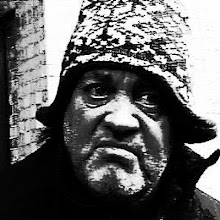For a while now I've been contemplating getting a 3D printer. Having a 1973 Triumph GT6 to rebuild has jogged me into action, as there are many plastic parts that are either unavailable or cost an arm and a leg due to their rarity.
It's a 2nd hand Creality Ender 5, which I bought for £95 from a young chap in Tockington who has a print farm business where he 3D prints terrain items for World of Warcraft and similar games, such as the ones below.
He has rows and rows of printers in a unit on a farm that has a number of small industrial units. He occasionally upgrades his printers and sells off the older models.
I know about as much as the next person about 3D printing, but I'm prepared to learn. Thus far I've learned that there are 3 critical elements:
- A 3D printer, believe it or not.
- A CAD software package for designing objects you want to print - I'm using Blender, which is Open Source and free.
- Slicer software that converts the CAD image into slices for the printer to print - I'm using Cura, which is again free.
You can additionally get a software package that will photograph an original object from multiple angles and recreate it as a CAD image. Some of these come as Android Apps, but you have to subscribe to a cloud service that performs the action and the monthly subscriptions can be quite high. Probably worth it if you're very keen or have a number of objects ready to transform into CAD files.
One obvious limitation of 3D printing is that you can't print objects with overhangs that suddenly appear part way up the object, as there's nothing to support the overhang. Overhangs that slowly build up are from the main structure are OK, as they are supported by the matrix below. Also overhangs that extend to the base, as they can be built up and eventually connect with the main structure.
Take, for example, the object above. While the tail of the bird on the left can be 3D printed, that of the bird on the right can't, as it's not supported by anything underneath. Had the tail extended to the table top, then it could be printed, as it's supported from the bottom.
I'm going to set myself the task of printing one of the resin lamps I made a couple of years ago (in the image below), but can no longer make due to having developed an allergy to the resin.
After a couple of days mucking about with the Blender software and watching YouTube tutorials, I've managed to come up with this, but it needs a lot more practice.
It's created by draping a rectangular plane over a solid sphere, giving the plane the attributes of cloth, deleting the sphere and turning the result upside down for printing, leaving a fluted shell - much in the same manner I made the resin shape.
The seller has kindly offered to perform a one or two hour printing tutorial for me on Monday for £20 an hour, which I think is very good value. He won't go into design, just the basics of printing, common faults and parts that could go wrong (and how to replace them). Looking forward to it.







1 comment:
Splendid!
Post a Comment